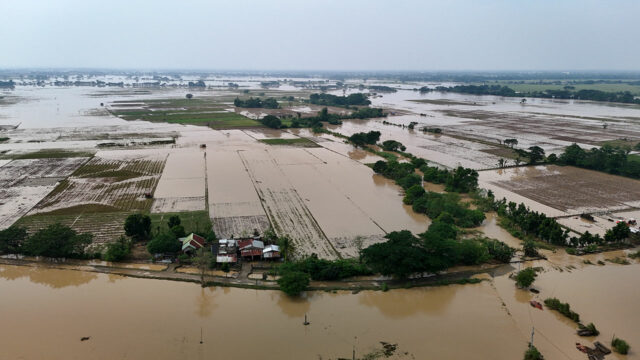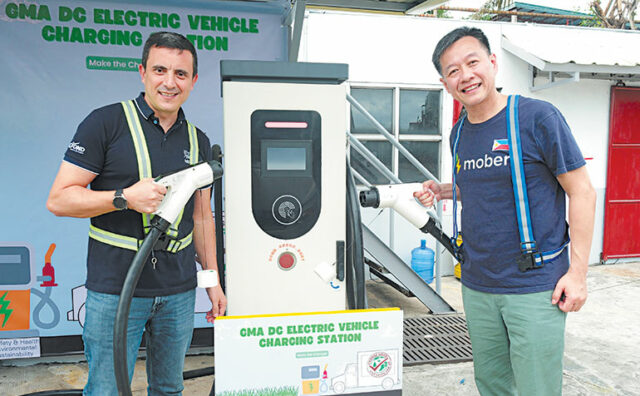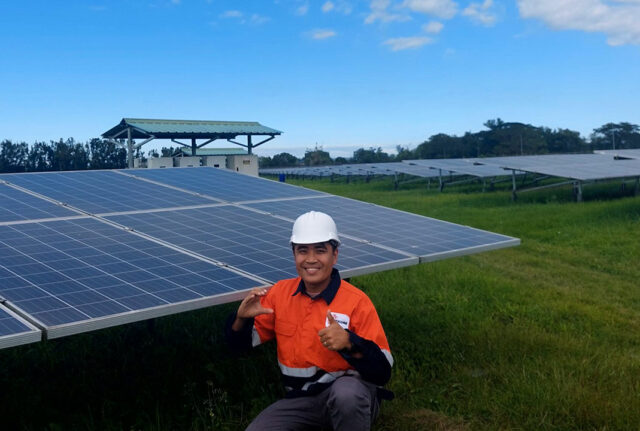Agricultural output may have contracted in 2024

By Adrian H. Halili, Reporter
PHILIPPINE FARM OUTPUT likely contracted in 2024, reflecting the adverse impact of weather-related events such as El Niño and La Niña, analysts said.
Former Agriculture Undersecretary Fermin D. Adriano estimates that the value of agricultural output may have declined by more than 1% in 2024.
If realized, this would be a reversal of the 0.4% growth in the value of agricultural production in 2023 and miss the Department of Agriculture’s (DA) 1-2% growth target for 2024.
“Of course, El Niño and La Niña adversely affected the sector,” Mr. Adriano said in a Viber message.
The El Niño weather event, which began in June 2023, brought below-normal rainfall conditions, dry spells and droughts that affected overall harvest during the year.
The Philippines continued to experience below-normal rainfall conditions in the first half of the year. In the second half, the country experienced a series of storms that brought heavy rains and caused flooding.
“The year 2024 was full of challenges and issues. Overall, the agricultural output will be lower than 2023 due to natural calamities including El Niño and La Niña one after the other,” former Agriculture Secretary William D. Dar said in a text message.
Mr. Dar said the delayed distribution of inputs to farmers, as well as lack of technical assistance from local government units may have also contributed to the decline in agricultural production.
“With the series of typhoons and calamities in the fourth quarter, we can only expect output in the whole of 2024 to be lower than in 2023,” said Federation of Free Farmers National Manager Raul Q. Montemayor in a Viber message, citing El Niño and La Niña as factors that contributed to the drop in farm output.
The Philippine Atmospheric, Geophysical, and Astronomical Services Administration (PAGASA) declared the end of the El Niño in June 2024 but dry spells persisted in some parts of the country.
According to the DA’s final El Niño bulletin, agricultural damage was tallied at P15.3 billion with total volume lost at 330,717 metric tons, spanning 109,481 hectares of farmland.
In the second half, La Niña conditions increased the likelihood of tropical cyclones, low-pressure areas, and the intensification of the southwest monsoon in the Philippines.
La Niña conditions are expected to persist until the end of the first quarter of 2025, according to PAGASA.
Hog production, in particular, saw a decline in production due to these weather disturbances.
“El Niño affected production because warmer temperatures caused pigs to pant and reduced significantly their feed intake causing slower growth and lower weights,”
National Federation of Hog Farmers, Inc. (NatFed) Vice-Chairman Alfred Ng said in a Viber message.
Mr. Ng said heavy rainfall also raised the likelihood of respiratory diseases among hogs, which would have led to higher treatment costs.
“Mortalities may also be an issue especially for poorly managed farms and facilities,” he added.
At the same time, Mr. Adriano said several animal diseases like the African Swine Fever (ASF) and the Highly Pathogenic Avian Influenza or bird flu, continue to affect the production in livestock and poultry sectors.
In the second half of 2024, the Philippines saw a resurgence in ASF cases which prompted the government to fast-track the roll out of vaccines for limited use.
Only the AVAC ASF Live vaccine from Vietnam has received approval for a limited government-controlled rollout. The Food and Drug Administration (FDA) has issued a Certificate of Product Registration for AVAC, valid for two years and subject to annual review.
The recent outbreaks were blamed on the spread of contaminated water due to heavy rains, the DA said.
OUTLOOK FOR 2025
Meanwhile, Mr. Montemayor said that farm production may likely rebound in 2025 due to low base effects.
“For 2025, you could say there is nowhere else to go but up given that we will be starting from a low base,” he said.
According to NatFed’s Mr. Ng, the DA and the FDA will soon allow the widespread use of the ASF vaccine which could help the hog industry’s recovery.
“If vaccine is successful for backyard raisers, then ASF virus load will go down and commercial farms with stronger biosecurity systems will also be protected. Then, the industry can bounce back as commercial farmers may be encouraged to come back,” he added.
The DA said earlier that the commercial use of the ASF vaccine could be allowed by February or March of this year.
The department also said that it is seeking to begin large-scale trials of a bird flu vaccine by March.
For Mr. Dar, the government must distribute agricultural inputs in a timely manner to help the sector boost production and income this year.
The Philippine Statistics Authority is set to release fourth-quarter and full-year data on farm output on Jan. 28 (Tuesday).
The agriculture sector contributes about a tenth of the country’s gross domestic product and provides around a quarter of all jobs.













